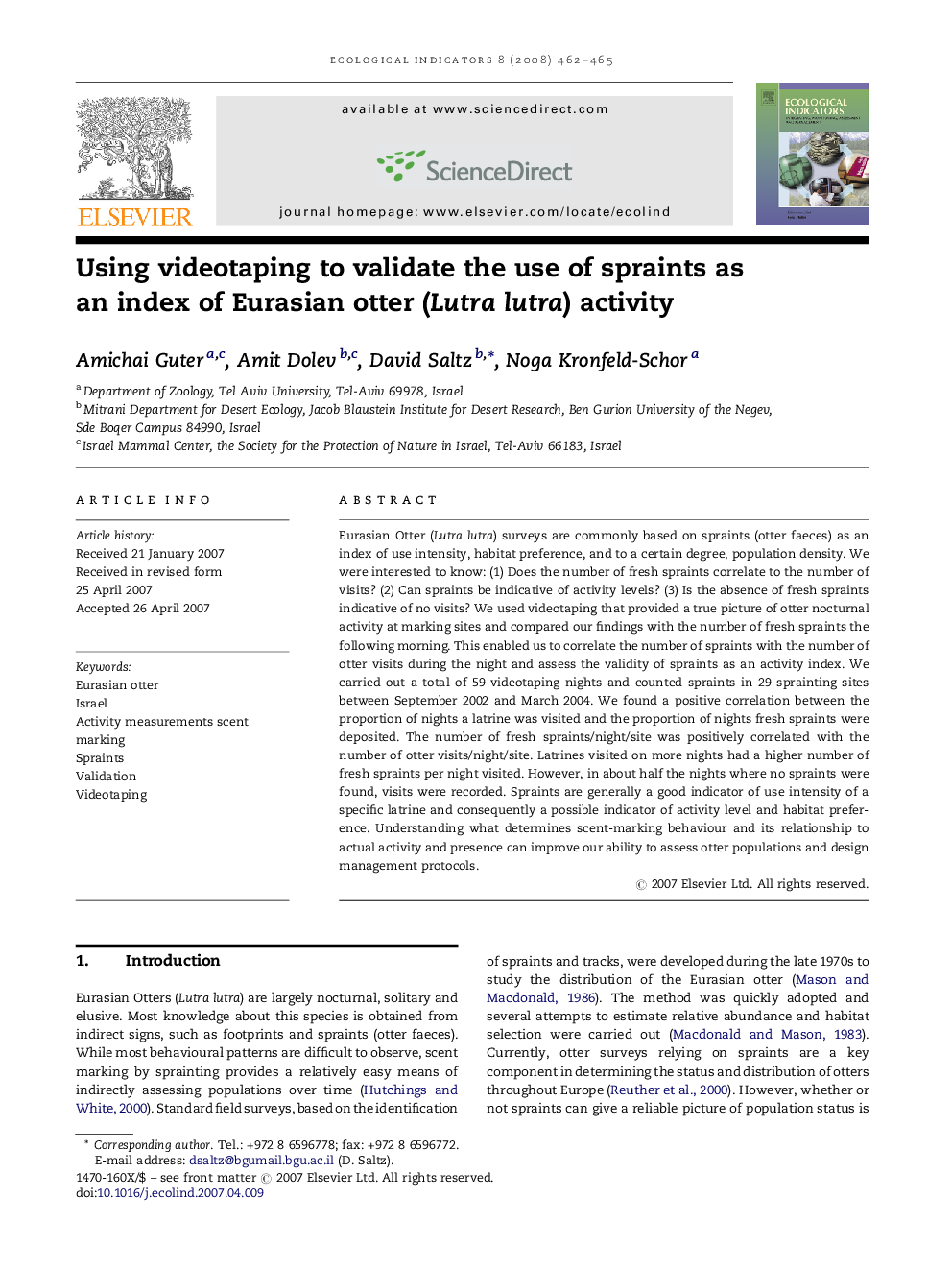| Article ID | Journal | Published Year | Pages | File Type |
|---|---|---|---|---|
| 4374390 | Ecological Indicators | 2008 | 4 Pages |
Eurasian Otter (Lutra lutra) surveys are commonly based on spraints (otter faeces) as an index of use intensity, habitat preference, and to a certain degree, population density. We were interested to know: (1) Does the number of fresh spraints correlate to the number of visits? (2) Can spraints be indicative of activity levels? (3) Is the absence of fresh spraints indicative of no visits? We used videotaping that provided a true picture of otter nocturnal activity at marking sites and compared our findings with the number of fresh spraints the following morning. This enabled us to correlate the number of spraints with the number of otter visits during the night and assess the validity of spraints as an activity index. We carried out a total of 59 videotaping nights and counted spraints in 29 sprainting sites between September 2002 and March 2004. We found a positive correlation between the proportion of nights a latrine was visited and the proportion of nights fresh spraints were deposited. The number of fresh spraints/night/site was positively correlated with the number of otter visits/night/site. Latrines visited on more nights had a higher number of fresh spraints per night visited. However, in about half the nights where no spraints were found, visits were recorded. Spraints are generally a good indicator of use intensity of a specific latrine and consequently a possible indicator of activity level and habitat preference. Understanding what determines scent-marking behaviour and its relationship to actual activity and presence can improve our ability to assess otter populations and design management protocols.
